Life at 78 Degrees North is surprisingly normal in many ways, except when it isn’t. From the lack of street names to the rules on dying, here’s some quirky facts about life in Longyearbyen.
I’m just back from my latest visit to Longyearbyen, the largest town on the Arctic archipelago of Svalbard. Why do I travel there so often? Simply put, I’m fascinated by the place, and the people who call it home.
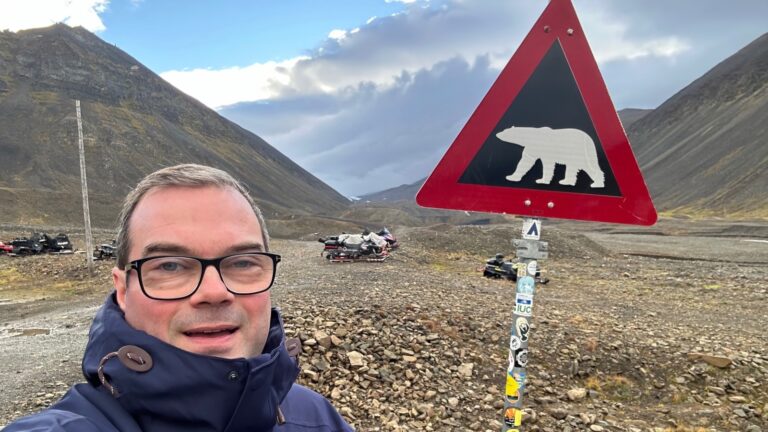
Depending on your definition, it’s the world’s northernmost permanently inhabited town. Every time I visit I discover something new, and meet more people will interesting stories to tell.
This time I arrived on Hurtigruten’s MS Trollfjord, having sailed over the course of a week from Bergen. In Longyearbyen, I met a Norwegian hotel receptionist, an Italian waitress, a Polish taxi driver, and visitors from all over the world.
Longyearbyen Travel Resources: Where To Stay – Travel Insurance – Tours & Activities – Car Rental
Over the years, I’ve noticed so many little curiosities about the town that become second nature to locals, but can trip up visitors.
So, beyond the midnight sun, polar night, and polar bears, here are 10 quirky facts about life in Longyearbyen.
1. The Streets Have No Names
Sharing addresses or giving directions in Svalbard poses a challenge for visitors as there are no street names. Instead, streets are numbered. Houses are addressed with both the street name and house number.
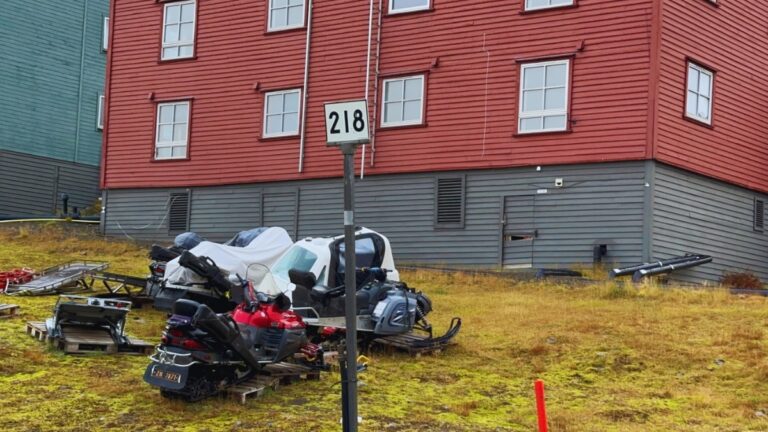
For example, if you live in house 17 on street 100 (a made-up address, by the way!), your address would be ‘Vei 100 17’.
Some areas of the town are named, which helps with navigation, but most directions will be given in relation to landmarks such as hotels, the school, and the church.
But don’t worry, Longyearbyen isn’t big and it’s very difficult to get lost given the lack of high-rise buildings. If you’re concerned, take a sightseeing bus tour on your first day to get your bearings.
2. Take Off Your Shoes
Many people around the world have a “house rule” of taking off outdoor footwear when entering a home. However, you may not be used to doing so when entering a hotel or museum.
This tradition in Longyearbyen dates back to the town’s days as a pure coal mining settlement. Back then, miners would return from work with boots covered in coal dust, so removing shoes before entering buildings was a must to avoid spreading the mess indoors.
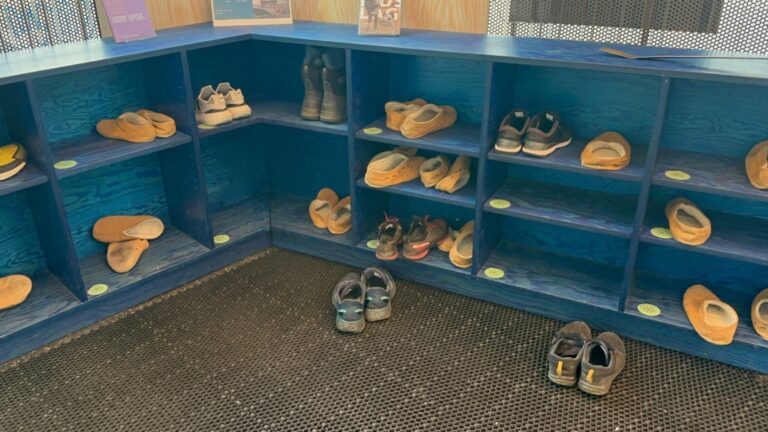
Although the mines are no longer the centrepiece of Longyearbyen’s economy, the practice has stuck around. To be fair, there’s good reason for it beyond tradition, too.
Even today, outdoor shoes in Longyearbyen get pretty messy, especially during the long winter months when snow and slush are everywhere. But even in the summer and autumn, the streets of Longyearbyen can be a dusty place.
The tradition of leaving your shoes at the door remains strong, even in public places like the local library, museums, and hotels.
Most places provide shoe covers or slippers for you to wear indoors. Personally, I bring my own pair of comfortable indoor shoes to use.
3. You Can’t Leave Town Without a Rifle
These famous polar bear warning road signs are a massive tourist attraction in Longyearbyen. But they aren’t just there for selfies!
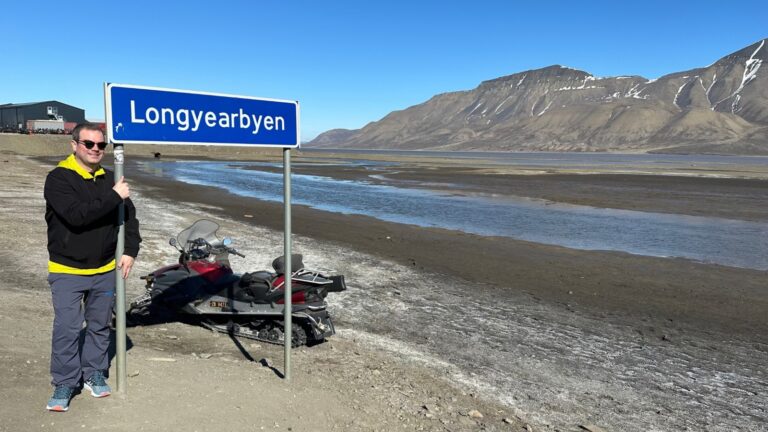
The signs serve to mark the town limits. That’s important, for you are not allowed to venture beyond the town border without the proper equipment (rifle and flare gun) and training due to the ever-present risk of polar bear encounters.
Note that the airport is actually located outside of the town limits. This means that, despite the (relatively) short walk from the airport to downtown, which some tourists do undertake, it’s not strictly permitted.
Although equipment is available to rent from the sporting goods stores in town, I’d recommend most guests join a guided tour unless you have expedition experience. All guided tours in Svalbard come with an armed guard.
For example, at Camp Barentz, which hosts wilderness visits, the guard is on constant polar bear watch. This allows the tour guides to focus on their job, and keeps participants safe.
4. The Population is Surprisingly International
According to Statistics Norway, of the few thousand people who call Longyearbyen and Ny-Ålesund home, a surprising 850 people do not have a permanent address in mainland Norway. This makes Longyearbyen one of Norway’s most diverse towns.
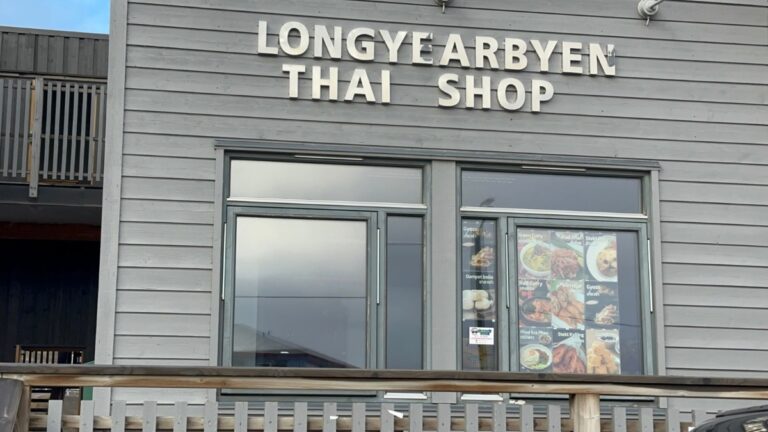
There’s quite a few other Nordic citizens living here, but plenty of the town’s residents come from much farther afield. For example, one of the biggest foreign communities in Longyearbyen is from Thailand.
For a visitor, Norwegian won’t appear to be the dominant language, even though most local business and municipal affairs are conducted in Norwegian.
Russian is also commonly heard in Longyearbyen. This shouldn’t come as a surprise, given that people from the Russian settlements Barentsberg and Pyramiden use Longyearbyen as a supply and transport hub.
For example, many staff in hotels and some shops and restaurants don’t speak any Norwegian. English is often the default language used in such establishments.
5. Pipelines Run Above Ground
One of the things that gives Longyearbyen a unique look is that all pipelines run above ground. This is due to the permafrost that covers much of Svalbard.
Because much of the ground remains frozen year-round, traditional underground piping would be prone to cracking and bursting.
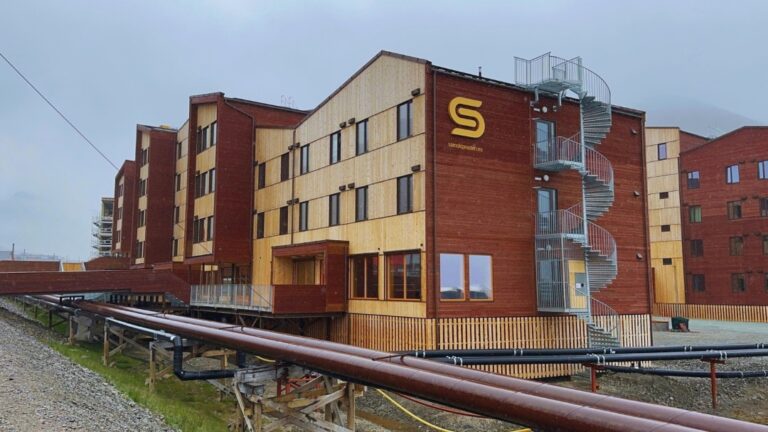
To avoid this, everything from water to sewage to heating pipes is built above the surface, often snaking their way through the town in a web of exposed metal.
While practical, the pipelines have become part of the town’s unique aesthetic, giving Longyearbyen a distinct, industrial appearance.
6. There’s a Brewery
Despite its remote location, Longyearbyen boasts its very own brewery: Svalbard Bryggeri. Established in 2015, this Arctic brewery has a fascinating origin story and is a real point of pride for locals.
Not only does it brew excellent beer, available throughout the town, but it also uses incredibly pure water—drawn from a 2,000-year-old glacier on the archipelago.
It’s the northernmost commercial brewery on Earth, and their impressive beer selection features everything from classic pilsner to darker brews named after the long winter darkness.
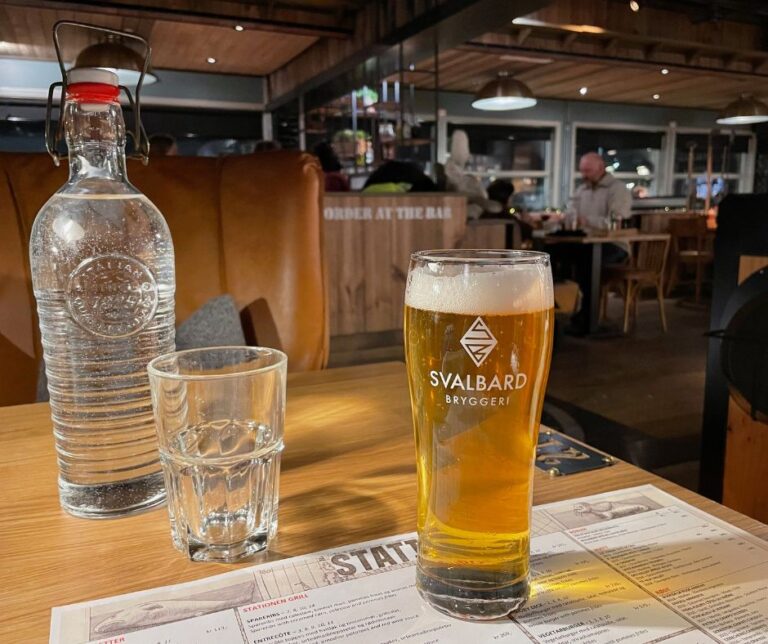
7. It’s Both Expensive and Cheap
Longyearbyen’s unique tax-free status makes it a mixed bag when it comes to prices.
On one hand, luxury goods like outdoor gear and some alcohol can be surprisingly affordable. Thanks to the lack of VAT and customs duties, high-end clothing and equipment are often cheaper here than on mainland Norway.
However, essentials like fresh fruits and vegetables are another story. All food must be shipped in from mainland Norway or other parts of the world, making groceries notoriously expensive.
You’ll pay a premium for fresh produce, while tinned and frozen goods are a bit more manageable. If you’re planning a longer stay, it pays to stock up on essentials when they’re available.
8. You Can’t Own a Cat
Cats are strictly forbidden in Longyearbyen, and for good reason.
With Svalbard’s delicate Arctic ecosystem, cats are considered a major threat to the local wildlife, particularly bird species that nest on the ground. To protect the environment, the town has enacted a complete ban on feline pets.
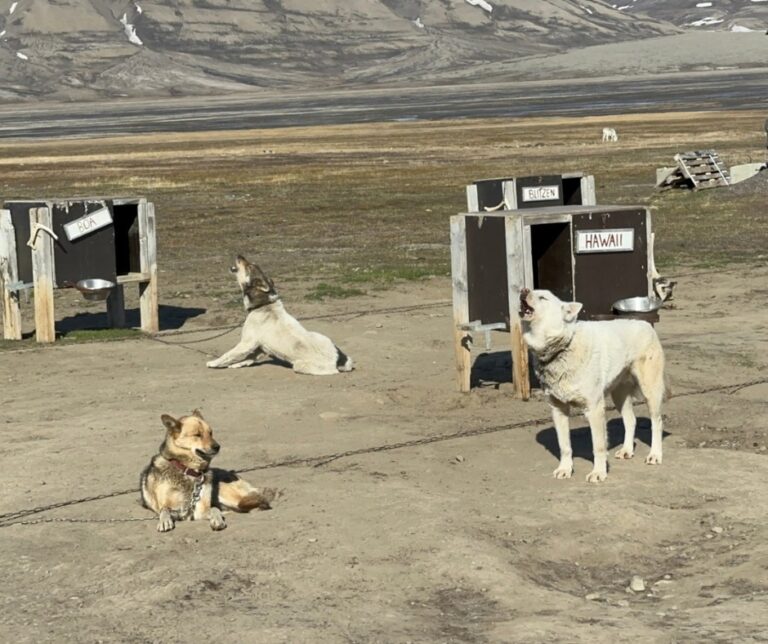
That said, you’ll see plenty of dogs. In fact, dog sledding is a popular pastime in Longyearbyen, and many residents keep huskies as working dogs.
The town’s love for dogs runs deep, with several businesses and public places being dog-friendly. The recently-opened Huskies is a wonderful cozy cafe that provides a home to retired huskies that guests can interact with.
9. Dying is Forbidden
Although there is a historic graveyard on the hillside near the church, dying is forbidden in Longyearbyen these days. How can that be? Well, you need to be earning an income and be of good health to continue living in the settlement.
If you fall seriously ill, you’ll be sent to the mainland for treatment, and there’s no possibility of long-term care or retirement in Longyearbyen.
Essentially, you need to be in good health and earning an income to live here, and once you can’t, you’re required to leave.
10. There are Guidelines for Tourists
When I last visited Svalbard on a cruise ship, I was handed a set of Longyearbyen Community Guidlines before disembarking. So intrigued was I by this initiative that I made this video all about it:
Cruise ships are a hot topic in Longyearbyen. Those who work in tourism rely on the big boost in revenues that a ship port call provides, but there are genuine concerns about sustainability and environmental impact.
Many on Svalbard don’t want cruise ships, and indeed, there are several measures being introduced to curb the size of ships allowed to sail in sensitive areas.
Longyearbyen Travel Resources: Where To Stay – Travel Insurance – Tours & Activities – Car Rental
But cruise ships are still permitted to dock in Longyearbyen. These guidelines have been put together by the local community, to try and improve the everyday life for locals when thousands of tourists flood the small town.
Some of the more interesting ones include always walking on the left hand side of the road if there is no pavement, being allowed to photograph but not touch snowmobiles, and not to pick any flowers.
Have you ever visited Longyearbyen, or perhaps even lived there? I’d love to hear what quirks of life in the Arctic you found most interesting. Just head down to the comments.

